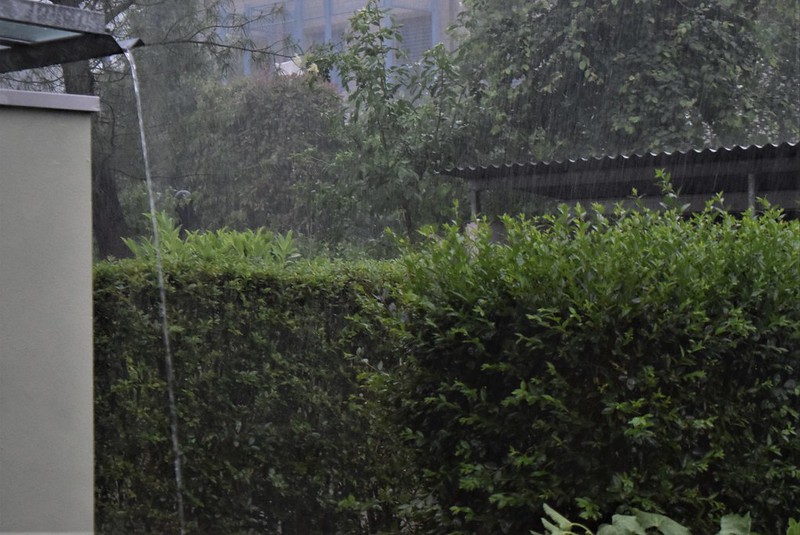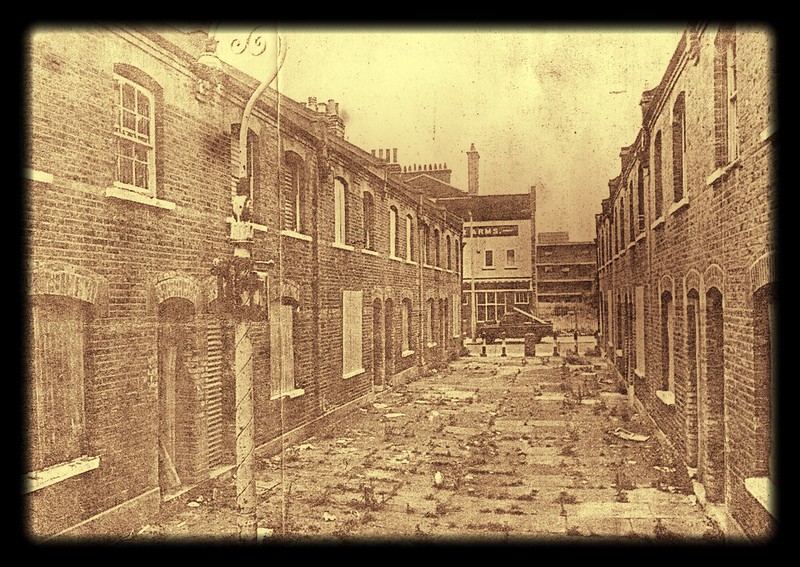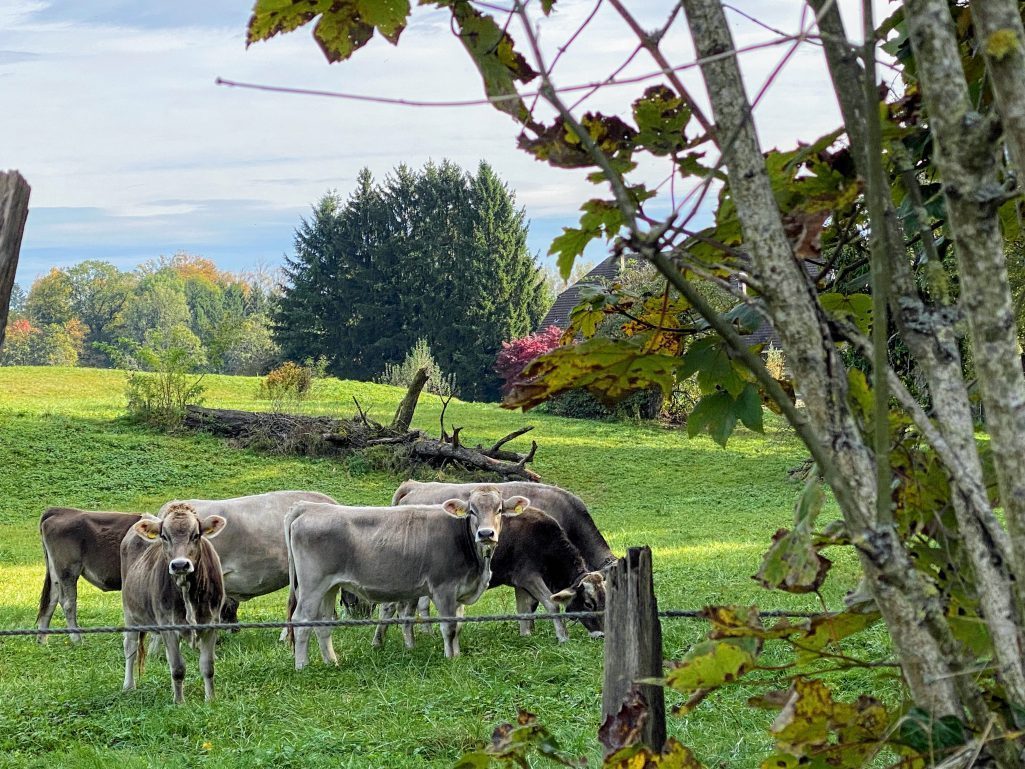
As soon as it rains, there are cataracts of water everywhere. At last a gutter was fixed above our entrance to the apartment block last year when a complete renovation was carried out. Now, instead of getting wet newspapers and letters from our letter box, they remain dry as the water in channeled to the exit. Of course you could get a free shower if you did not notice, but the water runs on the side out of the way.
This reminded me of an occasion in our house in East London where I grew up. It was built in 1884, had no bathroom and the toilet was outside in the garden. I grew up with it and got used to it, although the spiders that lived outside in the toilet, especially in the summer, were a nuisance. The advantage was I never spent too much time in the toilet.
In Winter it could become quite precarious because our water pipes were all fixed outside All the water from our sink and the rainwater collected and poured into these pipes. It worked, although in Winter now and again the water might freeze, as it did one Christmas, actually Boxing Day which meant we had no water in the kitchen.
This particular Christmas, not only were our water pipes frozen, but the sink was blocked and the water could not escape. There was a remedy for frozen pipes as it often happened. We had something called “lagging” which were torn remainders of material that you draped around the pipes and eventually the ice would melt. Later on Boxing day evening mum went to the kitchen, which was upstairs in our two story slum, to see if the ice had now melted. Of course it had, the lagging did the trick and water was flowing again. Mum had left the water tap open to be able to check. The problem was she forgot that the sink was blocked.
It was then that we realized cataracts do not only occur in nature. Our cataract had filled the sink, overflowed to the ground and was already a mini waterfall as it fell down the staircase. And, of course, it also seeped through the floor. Luckily electricity was not discovered when the houses were built so there was no electric wiring in the floorboards. It was all outside the walls. However, the lower floor was now quite damp. Luckily since grandad passed away, no-one was living downstairs. Of course a certain amount of damage occurred, so mum reported it to our insurance.
Insurance? Yes we had one, but nothing special or comprehensive. The insurance man came and said that walls and floors were not included in the policy. Mum was only paying a few shillings and the only object that could be replaced was an alarm clock, which we did not even realize we had.
I still remember the picture today of mum feet deep in water in the kitchen because the pipes thawed. I must have been about 10 years old at the time. Mum and dad spent all night trying to mop up the water as best as they could. It seems the house dried out eventually and I still lived there until I was 20 years old with mum and dad. Eventually the house was demolished and mum and dad moved to a house in Essex, where they at last had an inside toilet and bathroom.
Living in houses that originated from Victorian London in the East End of London was not fun. I still had the old gas holders on the wall in my bedroom from the original build of the house.

Our street before the houses were demolished.

Our flat here in Leytonstone – or at least the building it is part of – was apparently built as a corner shop in 1887. Thankfully our plumbing is a little more modern but oh, the joys of living with the quirky peculiarities of Victorian house building! 🙂
LikeLiked by 1 person
I grew up in Bethnal Green, with Jack the Ripper as a neigbour probably in the Victorian days and of course the Kray brothers, who lived in a street on the other side of the Bethnal Green Road. Our houses were all the same really. Same style and no mod cons. Gradually the slum clearance began and now you could not longer afford to live in Bethnal Green.Oh the delights of being a cockney.
LikeLiked by 1 person
Had my own personal temporary cataract today as you have already seen on my blog. But all is well now, the young man who is busy next door renovating the flat, came over and had a look – and it was just a wrong seal – that is the right seal at the wrong place. Took him just a couple of minutes to fix it. Now I have a tight plughole again .. (why does this sound so ambiguous?)
LikeLiked by 1 person
Yes I did read your entry today, very interesting, you are now an expert plumber. And those young men as neighbours can be so helpful 🙂
LikeLiked by 1 person
That was an employee from a plumbing firm, the firm renovates the empty flat next to mine. So I really went to a professional.
LikeLiked by 1 person
What a mess. sounds like demolition of those flats was due. Although of course, it was a place to live. Reminds me of the flats as pictured in the Call the Midwife Series. Roughly the same time and place, from my limited understanding of London.
LikeLiked by 1 person
The Call the Midwife series was more in the area where my dad grew up, in and around Poplar. The disappointing thing about the series was that it was not filmed in the East End of London, but in other locations, because the scenery no longer existed as it did. I remember those old streets of houses in my childhood and the smell of concrete when it rained.
LikeLiked by 1 person
Your street looks just like my mothers street in Liverpool before it was demolished. There was no nostalgia there , just better plumbing too!
LikeLiked by 1 person
Hi think all the working class areas looked the same. After the war a lot had to be replaced. Our street had no bomb damage. Mum said it would have been better as we were then rehoused
LikeLiked by 1 person
So there was a PBS series here (Do you get PBS?) where participants would have to live in a house modeled after a certain time period. One was called “Frontier House” and the participants had to live in the frontier without modern amenities. Dressed like they dressed. Ate like they ate… etc. Now I see there is one called “Victorian Slum House.” I suspect they will have to live as your parents did. Not that I am implying there was a slum involved in your story. Just things like water catchment and garden privies. I have it set to tape on my DVR – but like the previous post mentioned, I pictured it like “Call the Midwife.” http://www.pbs.org/program/victorian-slum-house/
LikeLiked by 1 person
I have never heard of PBS, but we have mainly German speaking tv, although get bbc Programmes because we pay for the extra. We were living in the 20th Century in our house and my grandad and grandmother moved into it at the end of the 19th century. My mum and her two sisters and brother were born in the house. Upstairs was a family with five children in their three rooms. Believe me Victorian slum house was not pretty
LikeLike
Maybe you can look at the link I have and stream it… .or maybe it is too close to home and you would rather not. PBS (Public Broadcast) is probably closest to BBC. Most of the “house” shows were usually very well done, well researched.
LikeLiked by 1 person
Found a link I could watch on YouTube. It was not bad. The family were working in the rag trade in the east end as many did at the time and it was hard and poorly payed work. What disrurbs me is the way they speak in the the film, far too good. Those in the East End spoke cockney at that time and still do today.
LikeLiked by 1 person
I am glad it got a fair review from you! I would hardly pick up something like accent. We have been in the UK twice and I had to have my husband communicate, even though we were speaking the same language I could not keep up! LOL
LikeLike
Sorry about the cataract you had — but good to see at least one person posting to that meaning of the word!
LikeLiked by 1 person
It must have happened about 60 years ago
LikeLike
The areas like that in Boston sold for gazillions of dollars and have been renovated so that they still look old, but they are all new inside. Much of Backbay and Beacon Hill date from the same period, but have been extensively renovated. We lived in one such house — a rental — for a year. It was a very cool little brick house that had a working fireplace. It ALSO had the BIGGEST, scariest cockroaches I’ve ever seen. I think they’d been living there since Paul Revere made his ride to alert to colonials that the British were coming!
LikeLiked by 1 person
Many houses were destroyed in the war as the area was near the docks, but our house survived, although due to the bomb blasts the house was shaken about and doors no longer fitted in their frames. Most houses were demolished and blocks of apartment houses were built. Now the area has become quite expensive to live, it is London with all the qualities of a big town. And we only had a fire place for heating.
LikeLike
So interesting! Makes me thankful that, although poor by many standards, we at least had indoor plumbing!
LikeLiked by 1 person
We just gott used to it. There were the public baths near near for a bath. Most people uAd a metal bath for the kids to bath in and you boiled a huge pot of water to do the washing. I really don’t know how mum managed, but everything was kept clean
LikeLiked by 1 person
I guess you can do what you have to do 🙂
LikeLiked by 1 person